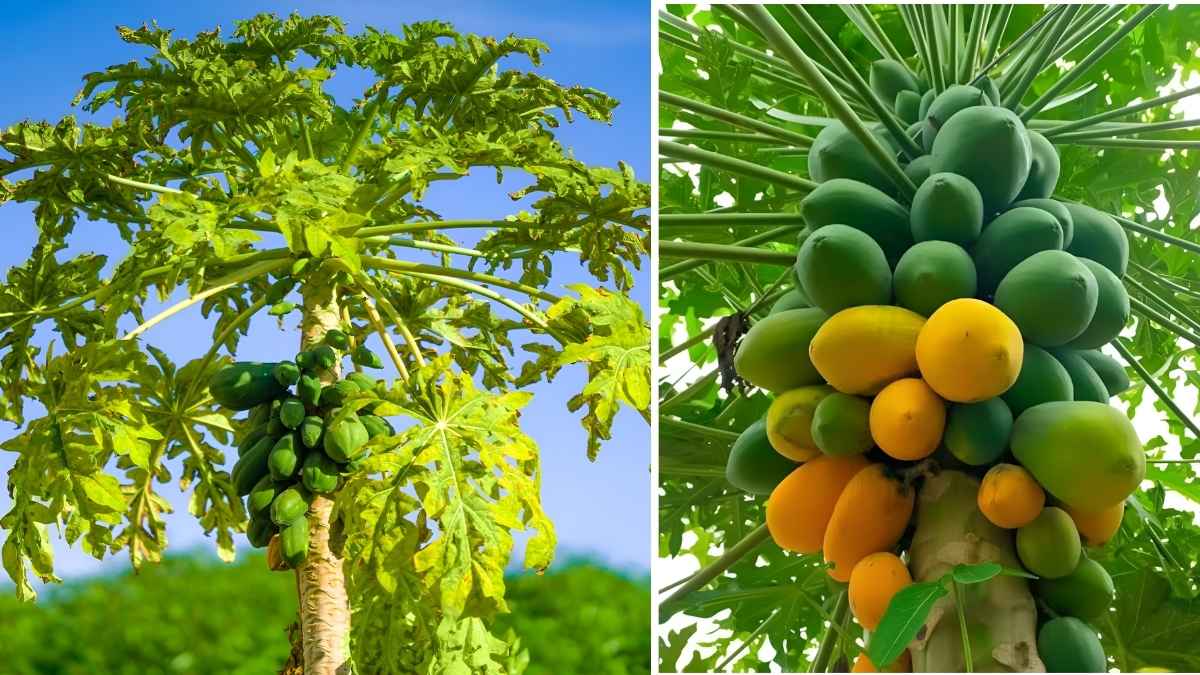Join on WhatsApp
Get the latest updates directly on WhatsApp – motivation, news & more!
Papayas are a tropical delight that bring both flavor and health benefits to your garden. Whether you’re growing them in a warm climate or attempting a more adventurous garden project in a controlled environment, papayas can thrive with the right care. These luscious fruits are known for their vibrant orange flesh and sweet, tangy taste, and they can be surprisingly easy to grow when you know what to do. If you’re looking to cultivate papayas quickly, here’s a step-by-step guide to help you grow juicy, ripe papayas in record time.
Choose the Right Variety
The first step to growing papayas successfully is selecting the right variety. Papayas come in different types, each suited to varying climates and growing conditions. For optimal growth and fruiting speed, it’s important to pick a variety that matches your growing zone.
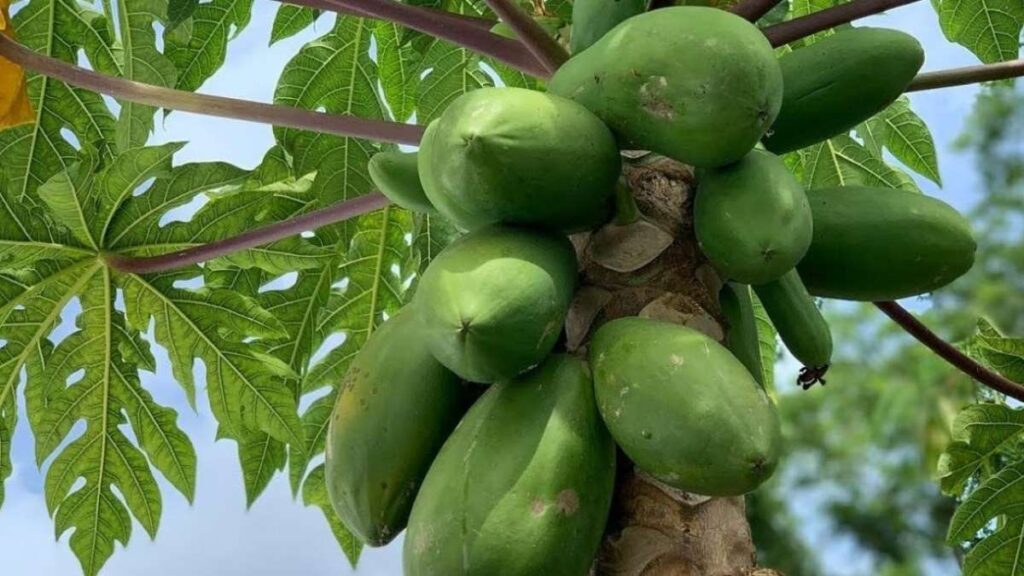
The Solo variety is a smaller type of papaya, typically round or pear-shaped, and it grows well in both tropical and subtropical climates. Solo papayas generally mature faster than other varieties, often reaching harvest in about 8 to 12 months. Another popular variety is Red Lady, known for its sweet, smooth texture and vibrant red-orange color. It’s relatively easy to grow and yields high-quality fruit. Lastly, the Sunrise variety is known for its fast growth, often bearing fruit in as little as 6 to 8 months, making it a top choice for those who want quick results.
Choosing a variety that is well-adapted to your environment ensures that your papayas will grow faster and more robustly, bringing you sweet fruit in a shorter amount of time.
Provide Ideal Growing Conditions
Papayas thrive in warm, sunny conditions and require a tropical or subtropical environment to grow well. However, with the right care, they can also be grown in greenhouses or indoor spaces that provide the necessary warmth. Papayas require temperatures between 70°F (21°C) and 85°F (29°C). Anything lower than 50°F (10°C) can damage the plant, so if you live in a cooler climate, consider growing your papayas in containers that you can bring indoors during the colder months.
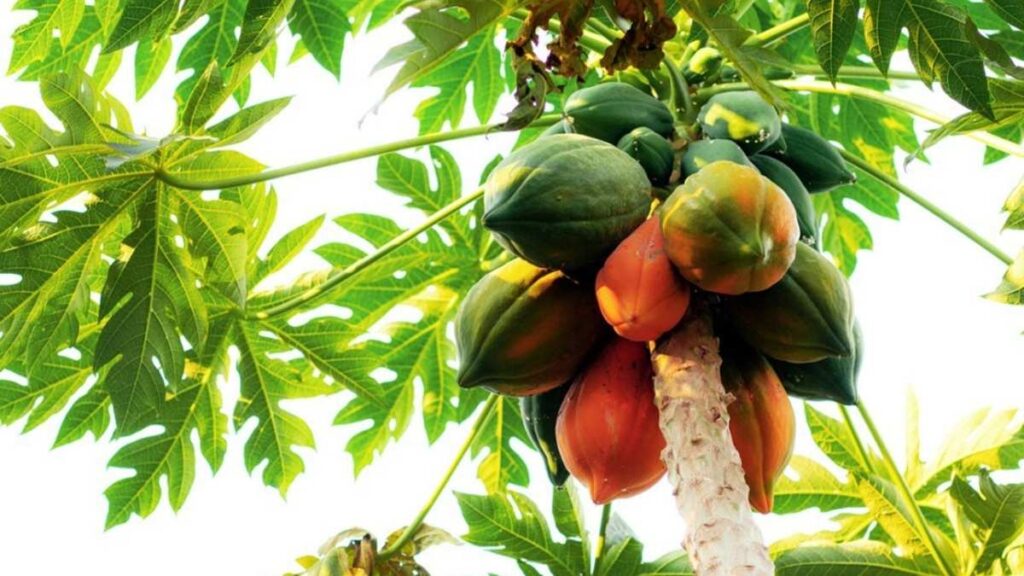
Papayas love sunlight and need at least 6 to 8 hours of direct sun each day to grow and fruit properly. Insufficient sunlight can result in weak plants and small fruits that don’t ripen as quickly. They also prefer well-draining, sandy loam soil that is slightly acidic, with a pH between 5.5 and 7.0. Healthy, rich soil is essential to support strong root development and rapid growth.
If you are planting outdoors, select a location that gets full sun and is protected from strong winds, as papayas are prone to wind damage. Good airflow is essential, but be sure to protect the plants from extreme weather, as they can easily be affected by frost or excessive moisture.
Start from Seeds or Seedlings
Papayas can be grown from seeds or purchased seedlings, though starting from seeds is often more cost-effective and rewarding. When starting from seeds, it’s important to first extract seeds from a ripe papaya. Clean the seeds thoroughly to remove any flesh, and then allow them to dry for a couple of days. Drying the seeds reduces the chance of mold and improves germination rates.
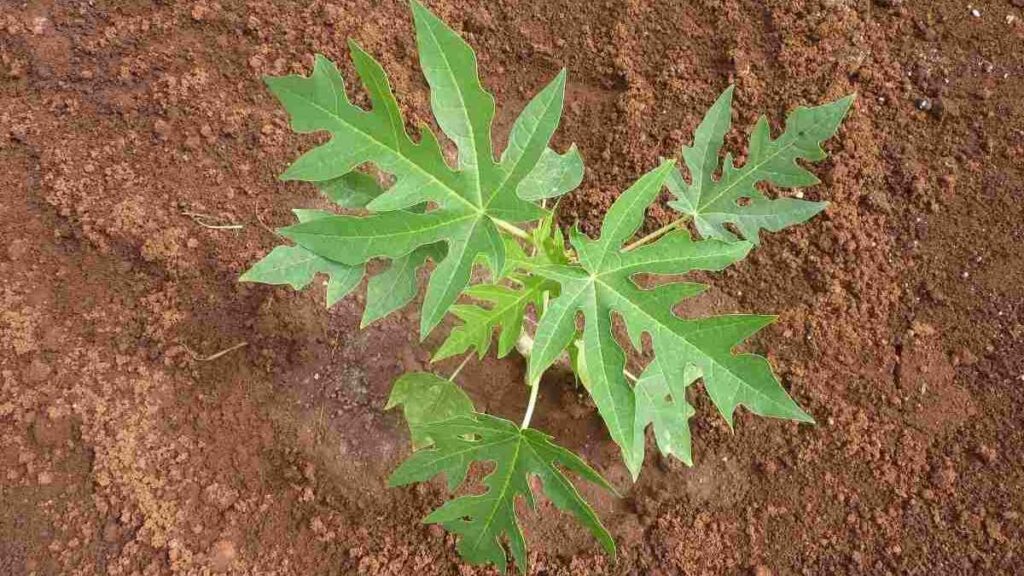
Once the seeds are dry, plant them in small pots or a seed tray filled with well-draining seed-starting mix. Plant the seeds about ½ inch (1 cm) deep and keep the soil moist, not soaking wet. It usually takes about 2 to 3 weeks for papaya seeds to germinate, though this can vary depending on conditions. When the seedlings have at least two sets of true leaves, they can be transplanted into the garden.
If you prefer to skip the seed-starting process, you can buy papaya seedlings from a nursery. These are often already a few months old and ready to be transplanted into your garden. While they cost a bit more upfront, seedlings offer a head start and will usually bear fruit sooner than plants grown from seeds.
Planting Your Papayas
When planting papayas, space is crucial for ensuring healthy growth and a quicker harvest. These plants require ample room to develop their roots and canopy. To give each plant enough space, plant papayas about 6 to 10 feet apart. This distance helps with air circulation, which reduces the risk of fungal diseases and allows the plants to grow tall and strong.
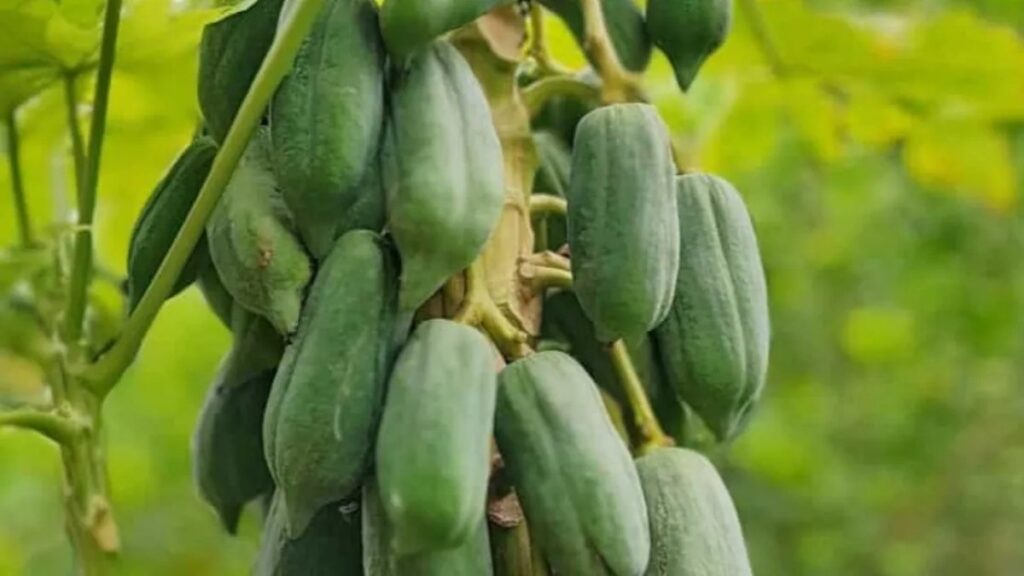
When transplanting your seedlings, ensure that the roots are placed at the same depth as they were in the nursery pot. If you’re planting seeds directly in the ground, ensure that the soil is loose and well-aerated. Gently loosen the roots if they appear compacted, which will encourage them to grow more quickly. If you’re growing in containers, make sure the pot is large enough to allow the roots to spread. A pot with a diameter of 18 to 24 inches should be sufficient for young plants.
Papayas can grow quite tall, often reaching heights of 10 feet or more. If you’re growing them in an area with strong winds, it’s a good idea to stake your plants or provide additional support to prevent them from toppling over.
Water and Fertilize Regularly
To grow papayas quickly and ensure they remain healthy, regular watering and fertilizing are necessary. Papayas require a lot of water to thrive, but they also need well-draining soil to prevent waterlogging. The roots of papaya plants are shallow, so it’s important to keep the soil consistently moist, but not soggy. Water the plants regularly, especially during hot or dry periods, ensuring the soil around the roots remains damp.
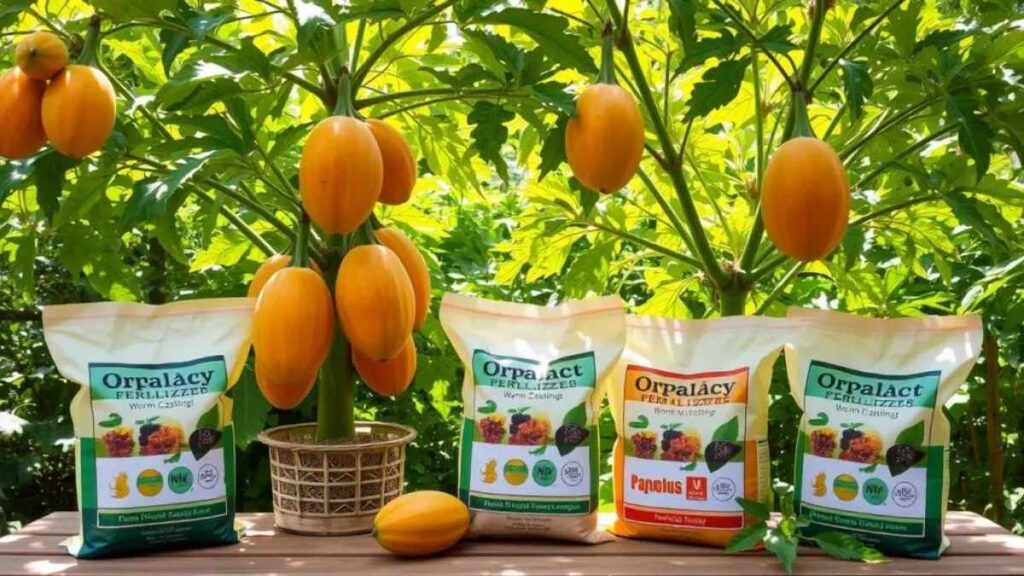
Fertilizing is essential to encourage rapid growth and healthy fruit production. Use a balanced fertilizer or one with slightly higher nitrogen content to support fast vegetative growth. Fertilize your papaya plants every 4 to 6 weeks during the growing season. Organic options like compost or well-rotted manure are also excellent choices for providing nutrients. The addition of mulch around the base of the plant will help retain moisture, keep the soil cool, and reduce the need for frequent watering.
Papayas also benefit from occasional nutrient boosts. If you notice yellowing leaves or slow growth, adding a high-potassium fertilizer can help boost fruiting and overall plant health.
Prune and Maintain Your Plants
Papayas are low-maintenance, but occasional pruning is essential to encourage healthy growth and ensure a bountiful harvest. As the plant matures, prune away any dead or damaged leaves to improve airflow and reduce the chances of fungal diseases. Additionally, pruning the lower leaves as the plant grows will help improve stem strength and keep the plant from becoming too bushy.
Papayas are also prone to breaking in strong winds, so it’s a good idea to stake the plants or provide support, especially as they grow taller. Prune excess growth to allow more energy to go into the production of fruit rather than unnecessary foliage.
Regular maintenance includes checking for pests and diseases. Keep an eye on your plants for common papaya pests like aphids, mealybugs, and fruit flies. If you notice any signs of infestation, act quickly by using organic insecticides or neem oil. Papayas are fairly resilient, but maintaining a pest-free environment will help ensure fast growth and a healthy harvest.
Harvesting Your Papayas
Papayas can be harvested when the fruit is fully ripe, typically when the skin turns from green to a vibrant yellow or orange. When ripe, the fruit should feel soft to the touch and emit a sweet aroma. The exact time it takes for papayas to mature will vary depending on the variety and growing conditions, but it generally takes anywhere from 6 to 12 months for the fruit to be ready for harvesting.
When harvesting, gently twist the fruit off the stem or cut it using a sharp knife. Avoid pulling the fruit too hard, as this can damage the plant. If the papayas are still green when you pick them, you can allow them to ripen indoors at room temperature. They will continue to ripen, becoming softer and sweeter over a few days.
Conclusion
Growing juicy papayas in record time is possible with the right approach. By selecting the best variety, providing ideal growing conditions, and offering the right care throughout the process, you can enjoy fresh papayas in no time. Whether you are starting from seeds or seedlings, maintaining consistent watering and fertilization, and pruning your plants for better growth, these steps will help ensure your papayas grow quickly and yield delicious fruit. With a little patience and attention, you’ll soon be harvesting your own juicy papayas and adding a tropical touch to your garden.

